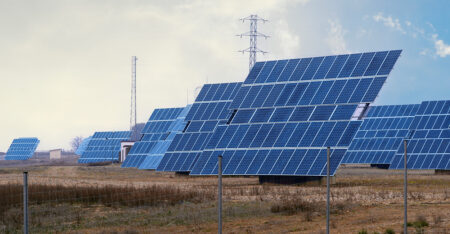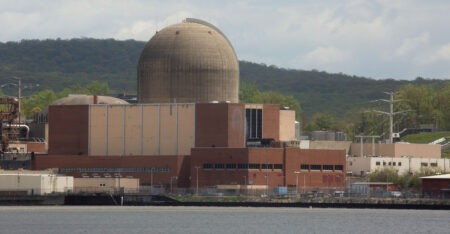Sea level rise on planet Earth could be attributed in part to astronomical influences that involve the sun, moon, and other planets, according to a new research paper from The Heritage Foundation taking aim at media reports on climate change that fixate on carbon dioxide emissions while ignoring other factors.
The gravitational interactions of heavenly bodies throughout the solar system figure into a larger set of natural phenomena affecting the oceans, cited in Heritage’s special report. (The Daily Signal is Heritage’s news and commentary outlet.)
But because many media outlets and academic journals falsely assume that only warming periods and human activity can have significant impacts on sea level rise, they typically seize on definitions that are “ambiguous” and “insufficient,” David Legates, a climatologist and professor emeritus at the University of Delaware who is a visiting fellow at Heritage.
“A more useful definition of sea level rise or, as it should be called, coastal inundation, is the increase in water levels relative to the adjacent land,” Legates writes.
The new research paper can be a vital tool for policymakers, Diana Furchtgott-Roth, director of Heritage’s Center on Energy, Climate, and Environment, said.
“Professor Legates’ paper is extraordinarily important, because it explodes the myth that carbon emissions and industrialization are causing the seas to rise,” Furchtgott-Roth told The Daily Signal. “It is vital to understand the true causes of sea level rise in order to have cost-effective policies to deal with it.”
>>> Read the special report, “Coastal Inundation: Rising Sea Levels Explained“
In the paper, Legates cautions policymakers against halting all man-made emissions of CO2 and other greenhouse gases in the U.S., as climate activists urge, since there is “no evidence” these actions would mitigate whatever processes cause sea levels to rise, whether natural or man-made.
It’s a mistake to presuppose, as many media definitions do, that land is “immovable” when clearly it isn’t, he writes. Land may rise or descend in response to several factors, Legates explains:
Isostatic processes—where the crust [of the Earth] returns to a state of equilibrium due to the addition or removal of surface forces—usually occur over long time scales, often involving ice sheet formation and removal. But changes in coastal elevation also can be induced by glacial outwash, channelization of rivers, pumping of groundwater, and changes in land use.
Legates argues that sea levels have been rising since the end of the last ice age about 22,000 years ago, and more is at work than carbon dioxide, or CO2.
Legates dismantles climate alarmists’ positions on sea level rise that are part of a larger media narrative on “extreme weather” and related issues that, in his view, falsely conflate recent trends with human activity.
“Sea levels were rising at an accelerated rate between 7,000 years and 15,000 years ago, and that change in the rate of global sea level rise was not solely due to atmospheric carbon-dioxide concentrations,” Legates writes. “A much better explanation is that most sea level rise is a response to the interglacial period and that equilibrium of the polar ice caps has not yet been attained.”
The often circulated idea that sea levels will rise between 15 and 30 feet from 2023 to 2100 is “clearly political hype and does not represent the science, even as advocated by climate alarmists,” Legates writes.
The climatologist calls for a deeper appreciation and understanding for the natural processes at work.
“Understanding the intricacies of how sea levels rise and fall is considerably more nuanced than simply linking sea levels to changes in temperatures due to carbon dioxide emissions,” Legates writes, then cites jurisdictions in Florida and Virginia as examples.
“Clearly, when news reports highlight locations where coastal inundation has been the greatest (such as in Miami Beach and Virginia Beach), something other than global-warming-driven sea level rise must also be operating. Otherwise, the story would be the same in all coastal areas of the world.”
Factors other than CO2 “play a nontrivial role in sea level fluctuations and variability,” Legates writes. This is where the effects of planetary rotation and gravity enter the equation.
The sun’s activities have an impact on portions of the Pacific and Indian oceans, while the gravitational pulls of other heavenly bodies can alter how the Earth rotates, according to his paper.
Here is how Legates describes the astronomical dynamics in his paper:
Variations in the Earth’s rotation are induced by interactions within the sun–Earth–moon system (including the effects of Jupiter and nearby planets) and the solar wind that affects the Earth’s magnetosphere. As a result, water is redistributed among the tropics and poles due to the increase in the equatorial diameter of the Earth that occurs when the Earth’s rotation increases.
Sea levels, therefore, rise in the equatorial Pacific and Indian oceans during periods of the Grand Solar Minima, while they decrease during the Grand Solar Maxima. Observed variability in sea levels of 20 years to 26 years in duration can be attributed to the Earth’s rotation. The Earth’s gravitational attraction also is an important component in global and regional changes in sea levels.
Overall, where gravitational forces are stronger, sea levels will be higher, which is counterintuitive. In fact, as an ice sheet melts, sea levels decrease near the melting ice sheet but rise at a considerable distance from the melting ice sheet due to changes in gravitational forces. Since gravity is not constant over the entire planet, local and regional variations exist in sea level resulting from differences in the gravitational force.
Legates also addresses some concerns related to rising sea levels, such as the potential for storm surge and flooding in coastal areas. The professor concludes that coastal warning systems are far more efficient in protecting life and property than any efforts to reduce the amount of CO2 in the atmosphere.
That’s because sea levels are rising from natural causes that have nothing to do with man-made circumstances, and the influence of greenhouse gases is “exceedingly small,” he writes.
The complete special report, “Coastal Inundation: Rising Sea Levels Explained,” is available here.
Have an opinion about this article? To sound off, please email letters@DailySignal.com, and we’ll consider publishing your edited remarks in our regular “We Hear You” feature. Remember to include the URL or headline of the article plus your name and town and/or state.
Read the full article here














